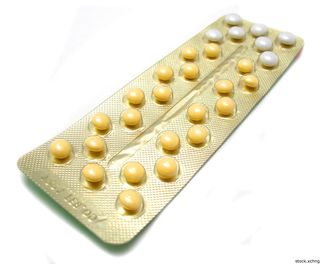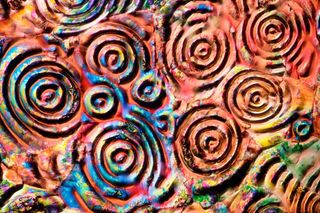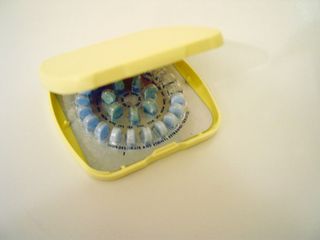7 Surprising Facts About the Pill
Surprising Facts about The Pill

There is only one drug known so well worldwide, it is simply called the Pill. Birth control pills are the number-one prescribed medicine in the world and, after 50 years on the market, are nearly as familiar as aspirin.
But like any proper lady, the Pill has kept some things close. Here are seven of her most surprising secrets.
-- Robin Nixon, LiveScience Staff Writer
Developed from yams

Scientists discovered progesterone, the Pill's main ingredient, in rabbits in 1928. While the researchers immediately realized its potential, progesterone originally could only be extracted from animals — a costly process. At $80 to $1,000 a gram, the hormone's primary market in the 1940s was world-class racehorse breeders; they used progesterone shots to improve horse fertility.
In 1943, Russell Marker, a researcher at Penn State, found an alternative source: yams.
A wild Mexican yam, known as cabeza de negro, provided large quantities of progesterone precursors, making cheap mass production possible. (Of course, historically speaking, yams are among the tamer of contraceptives people have tried.)
Made possible by a devout Catholic

The Catholic Church, in 1951, approved the rhythm method — in which a couple abstains during a woman's fertile period — but was (and remains) staunchly opposed to all other forms of birth control.
Still, it was a deeply devout Catholic who made the Pill a reality.
John Rock, a medical doctor who believed a robust sex life was a key ingredient to a healthy marriage, conducted the clinical trials that led to the FDA's approval of the first birth control pill, according to the documentary "The Pill" by Chana Gazit.
He also published an influential book "The Time Has Come: A Catholic Doctor's Proposal to End the Battle over Birth Control" (Alfred A. Knopf, Inc., 1963). In the book, Rock argued that the Pill works with a woman's natural cycle and thus was as non-sinful as the rhythm method. While the Church wasn't convinced, Rock essentially became the Pill's public face during the 1960s.
Loved and loathed by feminists

The first drug to be developed for purely social uses, the birth control pill was championed by early feminists. In fact, it was an elderly suffragist, Katherine Dexter McCormick, who footed the bill for its development. McCormick considered the Pill a precondition to women's freedom.
By the 1970s, however, as the potential health risks of the Pill became public, feminists saw the drug as one more example of an overbearing patriarchy, Gazit explains. They stormed Capitol Hill demanding to know why women should bear all the health risks for birth control.
Non-barrier methods of male contraception are still in development.
Pollutes rivers and affects wildlife

Women on the Pill excrete its synthetic hormones. Unfortunately, these hormones are difficult for water treatment plants to break down. According to one study conducted in Paris, a hormone found in birth control pills accounted for 35 to 50 percent of the estrogen found in rivers there. The study was published in the journal Science of the Total Environment in 2004.
Hormonal pollution of rivers, from birth control pills and other contaminants, is affecting the fertility of wildlife, studies suggest. The effect on human populations is uncertain, but studies have concluded that concentrations are high enough in some areas to potentially affect human health, according to a 2008 review article in the journal Fertility and Sterility.
May affect mating choice

A growing body of research is suggesting that the Pill may adversely affect mate choice.
Normally, the chemicals of attraction pull us toward people whose genes are quite different from our own. Greater genetic variation may enhance a couple's fertility and make resulting offspring heartier.
The Pill, by inducing a hormonal state that mimics pregnancy, could mess up this process. When a woman is pregnant, she gravitates toward people genetically like herself, theoretically because family members will protect her and her baby during this vulnerable period. But these are not the people she would normally want to mate with!
On the guy's side, men subconsciously scout for hormonal and physical clues of pregnancy before becoming involved with a gal — after all, the whole point is to impregnate her himself. As a result, men might find ovulating women more attractive than those on the Pill, scientists say.
A review of studies on this topic was published in the journal Trends in Ecology and Evolution in 2009.
Contains iron in placebo Pills

The last week of pills in a monthly pack does not contain hormones, at least for most varieties of the birth control. The original developers of the Pill included this placebo week to "enable" women to have their monthly period — a decision that was mostly about marketing. They wanted the Pill to seem as natural as possible in hopes of making it acceptable to women. (It turned out women needed little convincing.)
Today, some manufacturers include iron in the last week's pills, in a well-meaning attempt to help menstruating women deal with iron loss. In some women, however, iron supplementation causes gastrointestinal upset, including nausea, abdominal distress, constipation and diarrhea. So if these issues crop up during the last week of a pill cycle, they may not be caused by your period but the supplement.
Used for more than birth control

Although the original developers always had birth control in mind, the Pill was first approved in 1957 for "severe menstrual problems" — and came with a mandatory "warning" that the drug would prevent pregnancy.
Within two years, half a million women mysteriously developed severe menstrual issues — presumably taking the drug for its "side effect."
The FDA approved the first version of the Pill for contraceptive use on June 23, 1960. And today, the Pill is primarily used for contraception. However, it can also treat an array of medical issues, from polycystic ovary syndrome and endometriosis to anemia and acne. It is even used to treat bulimia.
Of course, it has also been used to expand women's role in the work place and spur an international sexual revolution, earning its title as one of the seven wonders of the modern world (The Economist, 1993).
Sign up for the Live Science daily newsletter now
Get the world’s most fascinating discoveries delivered straight to your inbox.

'Love hormone' oxytocin can pause pregnancy, animal study finds

'Mini placentas' in a dish reveal key gene for pregnancy











